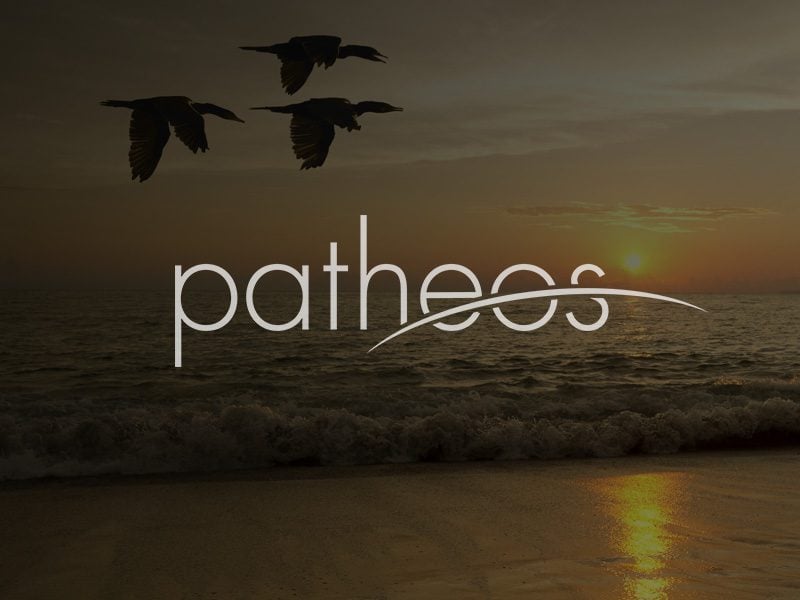Ah, Nemesis. Swift-flying, gimlet-eyed hangwoman of the gods. You really got me good this time, didn’t you, sugar? Friday started out just great: not only had I mentioned Michael Voris in an opinion piece without being lynched, the piece was actually turning out to be a hit. This I knew because every hour or so, the number of Facebook likes reflected on the button at the bottom of my page increased — sometimes by three or four, sometimes as many as ten. By the time I bedded down for the night, I was standing on 53.
That figure is modest by many blogs’ standards, but respectable by mine, and maybe even for the internet in general. As of this morning, Tracy Clark-Flory’s latest piece, “It’s the Sex, Stupid,” had only 124 Likes despite a day’s exposure on Salon’s front page, and despite having the word “sex” in the title and the word “Republicans” in the blurb. No, 53 Likes and no suggestions that I do something physically impossible to myself represented success bought on the cheap.
But then my Like button broke. Actually, judging from what I’ve seen on Patheos’ other blogs, everybody’s Like button broke. Now they only reflect the number of satisfied readers who clicked the button on the Facebook news feed; the number who clicked the button on the page itself is lost — possibly forever.
It was a fine morning’s perepeteia. I confess to having enslaved myself to my Like button. Nothing inspires me like seeing those numbers climb. Fixation on Likes has its practical side, of course: when people click the Like button, a thumbnail of whatever I’ve written shows up in their Facebook news feed. Which means my piece gets more clicks. Which means I get paid. But the greater share is irrational, visceral even.
Other, better metrics exist. I could log into Sitemeter, for example, and find out exactly how many people viewed my blog on the day in question. At the end of every month, Patheos sends me an analytics report which breaks down my site hits by blog entry — in many cases, the most popular posts aren’t, so to speak, the best-Liked. And, of course, there are tweets, and comments. But none of these speaks directly to a writer’s ego like a Like. Joseph Conrad once said, “I don’t want criticism. I want praise.” That sums up the blue button’s absorbent appeal for me. Making money and stimulating discussion is meat and potatoes; getting Liked is oxygen.
Zadie Smith would probably detest the whole concept of Liking. In “Generation Why,” an essay for the New York Review of Books, she finds that life on Facebook requires “a certain blandness.” When users express themselves through the network, they are being observed by tens — perhaps hundreds or thousands — of “friends,” whose own counter-expressions will also be visible to throngs. She does note advantages, e.g., “no more faceless bile” or “inflammatory trolling.” Still, she fears that, as Jared Lanier writes in You Are Not a Gadget, people will “’reduce themselves’ in order to make a computer’s description of them appear more accurate.” Below Liking/Not Liking, a reader evaluation is irreducible. Even YouTube’s combox offers a thumbs-down button.
The point here is not that the Like button prevents readers from writing the five-paragraph responses they’d have written under other cirucmstances. The combox is there for anyone who wants to use it, and in fact, a fair number always choose to. It’s entirely possible to share a post in a disapproving spirit: all you have to do is copy the URL and paste it into your FB window along with some pointed commentary. That, too, counts as a Like. But the damn button’s very name tends to support another of Smith’s ideas, namely, that the structure of Facebook reflects founder Mark Zuckerberg’s personal desire to be liked.
“For our self-conscious generation (and in this, I and Zuckerberg, and everyone raised on TV in the Eighties and Nineties, share a single soul),” she writes, “not being liked is as bad as it gets. Intolerable to be thought of badly for a minute, even for a moment.” Like Smith, I belong to the older of those two generations and share that common horror. For that reason, I’m able to appreciate the full implications of a Facebook Like: not only does my reader enjoy my writing, it’s the kind of thing he wants people to see him reading. A thumbnail of a Max Lindenman blog post is the copy of War and Peace he leaves half-open on his beach blanket to impress chicks.
I know because I’ve Liked things with that very goal in mind — including some pieces of writing I never got around to finishing, or never really thought through. To be read and not Liked is to feel like a guilty pleasure at best, someone your cooler friend will talk to when his other, still cooler, friends aren’t around to judge him.
I started writing for publication in 2009. Facebook existed, but the magazines I submitted to had yet to install Like buttons on their websites. The satisfaction was in getting the work accepted. I checked the comments, and was always pleased when someone seemed to get what I was saying, but finding the section empty involved nothing like the tree-falling-unheard-in-the-forest sense I get when a blog post goes un-Liked.
Writing in the Like era reminds me of nothing so much as my days in high-pressure sales. Every single day evolves into its own drama of tragedy or triumph. The things I find myself thinking when I compare my Like totals with other bloggers’ — either, “Aw, yeah. I really smoked So-and-So’s ass,” or “That no-talent SOB only racks up such great numbers by playing to the lowest common denominator” — are the very things I thought on the floor.
Writers have competed with each other forever. But were the relevant data always so close at hand or so public? Bad popular novelists like Tom Clancy and Leon Uris could defend themselves from critics by pointing to their sales figures, but the victories they gained tended to be pyrrhic. Their boasting reminded everyone what philistines they were. These days, no blogger — no columnist, even — has to point to his figures. They’re right out there in plain view. Anyone can tell the players from the chumps at a glance.
So it seems I have become addicted, once again, to something that is in some ways harmful to me. But the Like button is something I can’t swear off — it’s here to stay, or at least until social media comes up with something more efficient, eye-catching and psychologically adhesive. For that reason, I’ll hope that Nemesis decides to go punish someone else, or at least that the tech people make it possible once more to check my work’s Likeability. Until then, I’m stuck checking the Share totals, and that is no fit substitute. The word “Share” reminds me of AA, the world’s most enduring symbol of self-denial.
.











